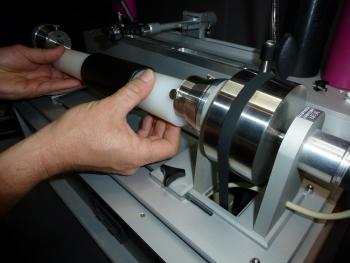Curator Thorsten Kaeding looks at how and why the NFSA selects – and sometimes excludes – materials from the national collection.


Curator Thorsten Kaeding looks at how and why the NFSA selects – and sometimes excludes – materials from the national collection.
There are many rewarding aspects to being an archivist and curator. At the NFSA we get to interact with and share a truly unique and fascinating collection, which reflects and represents the broad range of Australia’s culture through its audiovisual industries and artists.
For me though, the most engaging task is growing the collection through the acquisition and selection of content. While this may sound relatively straightforward, it requires a great deal of time, effort and thought. The nature of any coherent collection is that it is built over time with a clear set of goals and processes. At the NFSA we use our Collection Policy as the basis for the decisions we make about what goes into the collection.
It is important to remember that how collections are built and maintained changes over time. As the NFSA collection grows, and as society evolves, what and how much we collect evolves too. As an example, in the early days of the NFSA we acquired a lot of non-Australian content, possibly as a reflection of the pressure to rapidly grow what was then a nascent collection, particularly in the area of recorded sound. Over time the focus has shifted to prioritising Australian creative involvement in the material we select and keep in the collection.

We are frequently offered, or receive material for inclusion in, the NFSA collection but there are several reasons why it may not ultimately be included. The items may not meet the selection criteria outlined in our Collection Policy. The offered material may be in too poor a physical condition, or it may already be well represented in our collection. We don’t necessarily aim to collect every example of Australian audiovisual content; what we aim for is a collection which has good representative examples of the whole range of audiovisual content produced in Australia.
We want a collection which current and future generations can access and research, a collection which is able to provide an insight into the past, present and future of Australia’s audiovisual cultural history. We don’t need to collect everything to achieve this, but we do need to take the time and care to weigh up what we are offered and what is already in our collection and to make informed decisions on what to take in and what to keep.
Fortunately, at the NFSA we do have a clear idea, built over many years of experience, of what our collection is and needs to be. Building our collection is a collaborative exercise. We draw on our collective knowledge as specialists in the archiving of audiovisual cultural heritage; our decisions come from considerable discussion, are guided by our polices and strategies and ultimately signed off by the NFSA Executive. It is vitally important that our processes are always objective, as this is a collection for all Australians and there is no place for personal preferences or prejudices in building our national collection.
Over the years I have been lucky to be able to select some fabulous items for the collection, but I’ve also had to say ‘no’ to fantastic content which we haven’t included. Sometimes these decisions are tough to make, but at the end of the day it’s about building the best collection we can – a collection which fulfills our mission to collect, preserve and share Australia’s vibrant and diverse audiovisual culture, reflecting who we were, who we are, and who we want to be.
A great example is the recent process we have gone through with our excess sound material. The NFSA received it over a number of years, and we have taken time to undertake a careful selection process: assessing items according to their significance, condition and relationship to the existing collection. This material represents nearly 100,000 items, including 60 pallets of 78rpm shellac records, 9 pallets of piano rolls and 8 pallets of cylinders.
Ultimately, we selected over 1,000 items, including 900 piano rolls and over 30 rare Australian cylinders. The remaining material was offered to interested institutions and individuals through a tender process, with the NFSA receiving submissions from parties both in Australia and overseas. It was fantastic to see the commitment across the tenderers to making sure that the excess items are preserved and able to be enjoyed by the audiences they were originally intended for.
This process, which is part of the normal selection processes undertaken by collecting institutions the world over, has taken years of sorting and selecting to ensure the best outcome for our collection as well as the best possible outcomes for the material we have not selected. One of the great results of the tender process we have gone through is that the content we have not selected will likely still be digitised and made available online by its new custodians over the coming months and years.
In the meantime, a key priority for the material we select for our collection is to ensure its long-term preservation and accessibility. To that end, we have extensive and ongoing programs in place to digitise our collection material with an emphasis on at-risk formats and content.
You can read more about how we acquire collection material on our Collection Offers page. Our Digitisation Strategy sets out the case for digitisation, the materials at risk and how the NFSA will take a leadership role in the digitisation of Australia's audiovisual heritage – before it is lost forever.
The National Film and Sound Archive of Australia acknowledges Australia’s Aboriginal and Torres Strait Islander peoples as the Traditional Custodians of the land on which we work and live and gives respect to their Elders both past and present.